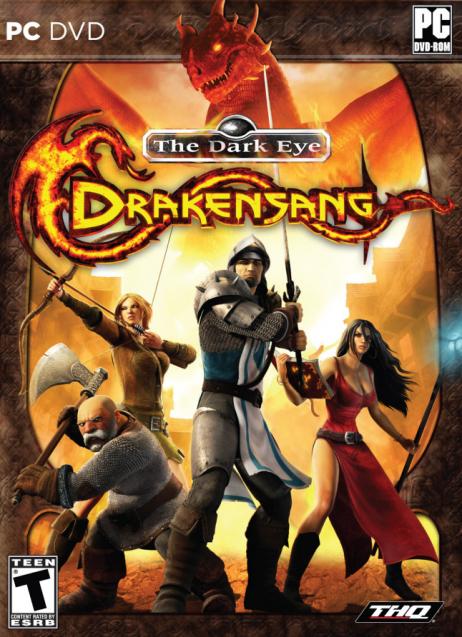Drakensang: The Dark Eye Review
-
Category: ReviewsHits: 26705

Article Index
Page 1 of 5
The Dark Eye has been the biggest pen and paper RPG property in Germany for as long as many of us can remember. For that reason, it's no surprise that the TDE-based Drakensang was a huge title in German-speaking areas. By comparison, the international release is very tame, and this title has no doubt slipped under the radar of many casual RPG fans.RPG veterans will fondly recall the TDE property under the name of Realms of Arkania, the three titles released between 1993 and 1997 that became the Northland Trilogy. To this day, they're still remembered by many as some of the greatest accomplishments in cRPG history. To keep any unfair comparisons at bay, Drakensang: The Dark Eye is not Realms of Arkania IV, nor does it make any pretense to be. It is based on the 4th edition of the TDE ruleset (which is fairly different from the 3rd edition that the NLT was based on) and clearly inspired more by Baldur's Gate and Neverwinter Nights than Realms of Arkania. It really doesn't help to compare this game to a classic series it has nothing much to do with (other than one amusing little easter egg remark in the game) and makes no claims to be related beyond using the same license, which makes them cousins in the same way Gold Box D&D games are related to the Infinity Engine D&D games.
So how does it measure up on its own strength?
Basic Gameplay
We'll cover all elements more in-depth later, but to give you a basic idea of what we're looking at here: Drakensang is a third-person, bird's eye view RPG that utilizes real-time with pause combat. In these elements, it basically follows the rough design set down by BioWare's D&D titles, so if you've played those, Drakensang will feel at least somewhat familiar.
Drakensang is structured along a fairly linear main path, in which you unlock areas to explore and then find many of these same areas locked again as you leave them, giving you only a handful of locations on the fairly small area map that you can return to whenever you want. Along with the main quest, which determines when areas are unlocked, there are plenty of side quests to find in each area or spanning different areas. These are broken down between dialogue-centric, thieving, and predominantly fighting quests.
Movement within each area is alotted quite a bit of freedom, with a few restrictions. One such restriction is the seemingly "standard" restriction of many a third-person RPG, by which your character is incapable of jumping, climbing, or swimming, meaning your mighty hero can easily be stopped by a river, steep hill, or knee-high fence. This same logic applies to most buildings, which cannot be entered.
Drakensang is a party-based RPG. You create a single character (from 20 archetypes offered by the game), and then recruit others as you go along your adventures. A balanced party is important, so the freedom of customization granted to the player (you have full control of where and how characters invest skill points) is a welcome addition.
Technical Design
Smaller European releases have a bad reputation when it comes to technical polish, but Drakensang is a pretty positive exception. It ran with refreshing stability on my rig, with only one consistent crash-causing bug I could find (it would crash whenever I tried to read the second page of a certain alchemic recipe). The only major annoyance I ran into was a quest-killing bug a ways into the game, which I could not recreate after reloading, leading me to believe it was a freak occurrence.
Loading screens seem to get longer as you get along in the game, but the game's designers were sensible enough to generally place you in single large areas, forcing very few loading screens onto the player. Nor are the loading screens ever excessively long. In general, the game seems pretty well-optimized for the average PC gaming rig.
The interface is refreshingly intuitive but has some head-scratching moments. It takes a while to get used to its combination of both WASD and left-mouse button clicking for movement, while maneuvering the mouse itself swivels the camera angle. However, the game has all the standard features quick-slot bar, logically mapped hotkeys for different menus, mouse sensitivity settings that we've come to expect from cRPGs.
The biggest issue in interface is the fact that the game asks you to do a lot of walking. Not a problem by itself, except that your characters walk really, really slowly, and there's nothing in the options to fix this (though an INI settings tweak is possible). On top of that, conspicuousness in their absence are a (toggle walk on/off) button and a (click on the map to walk there) feature. This all combines to not just make walking probably one of the biggest chunks of your gameplay time, much to the game's detriment, but to also force you to sit there and hold the W button while your characters slowly crawl across the map.


